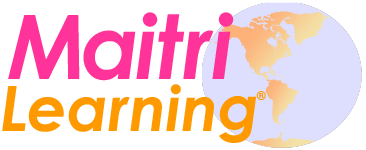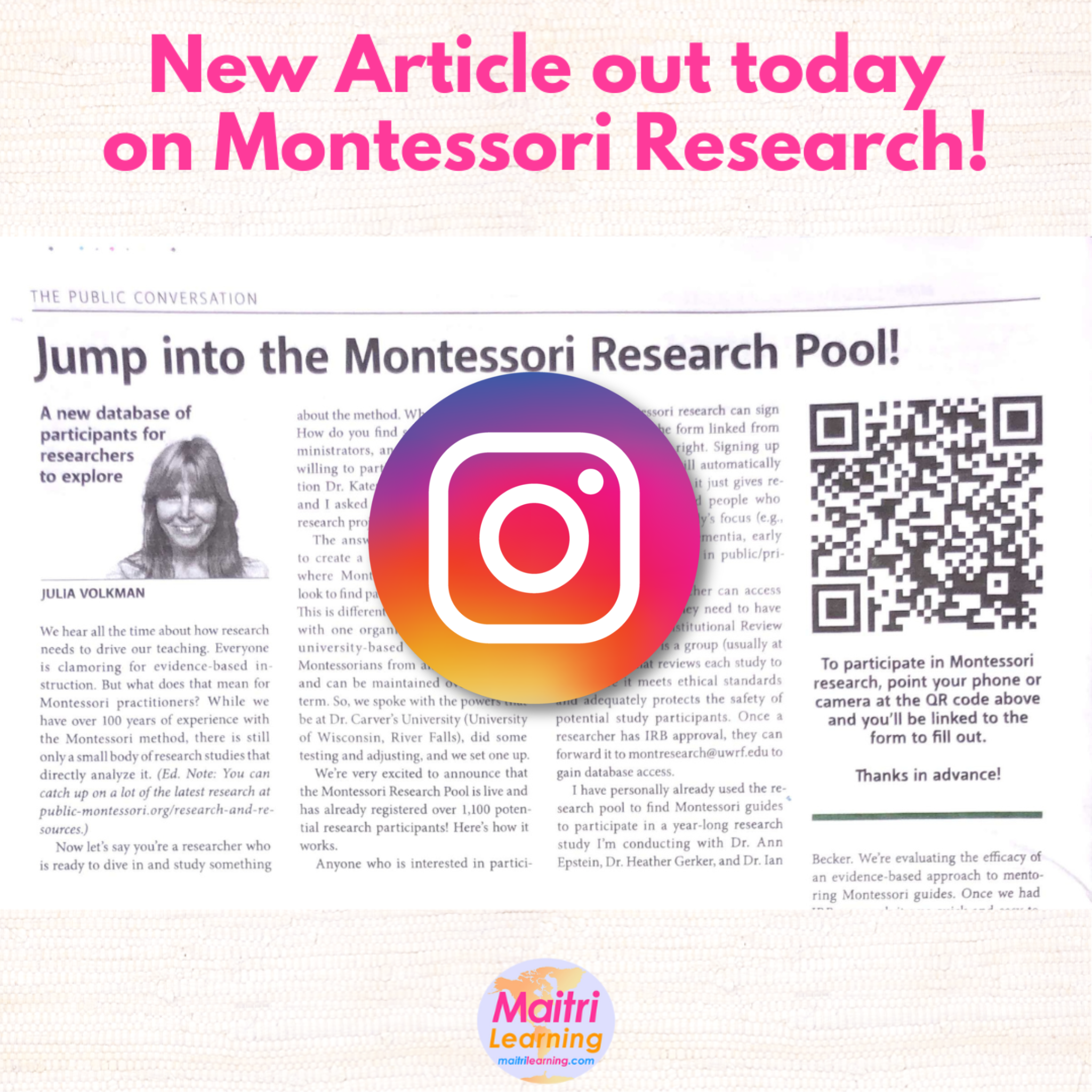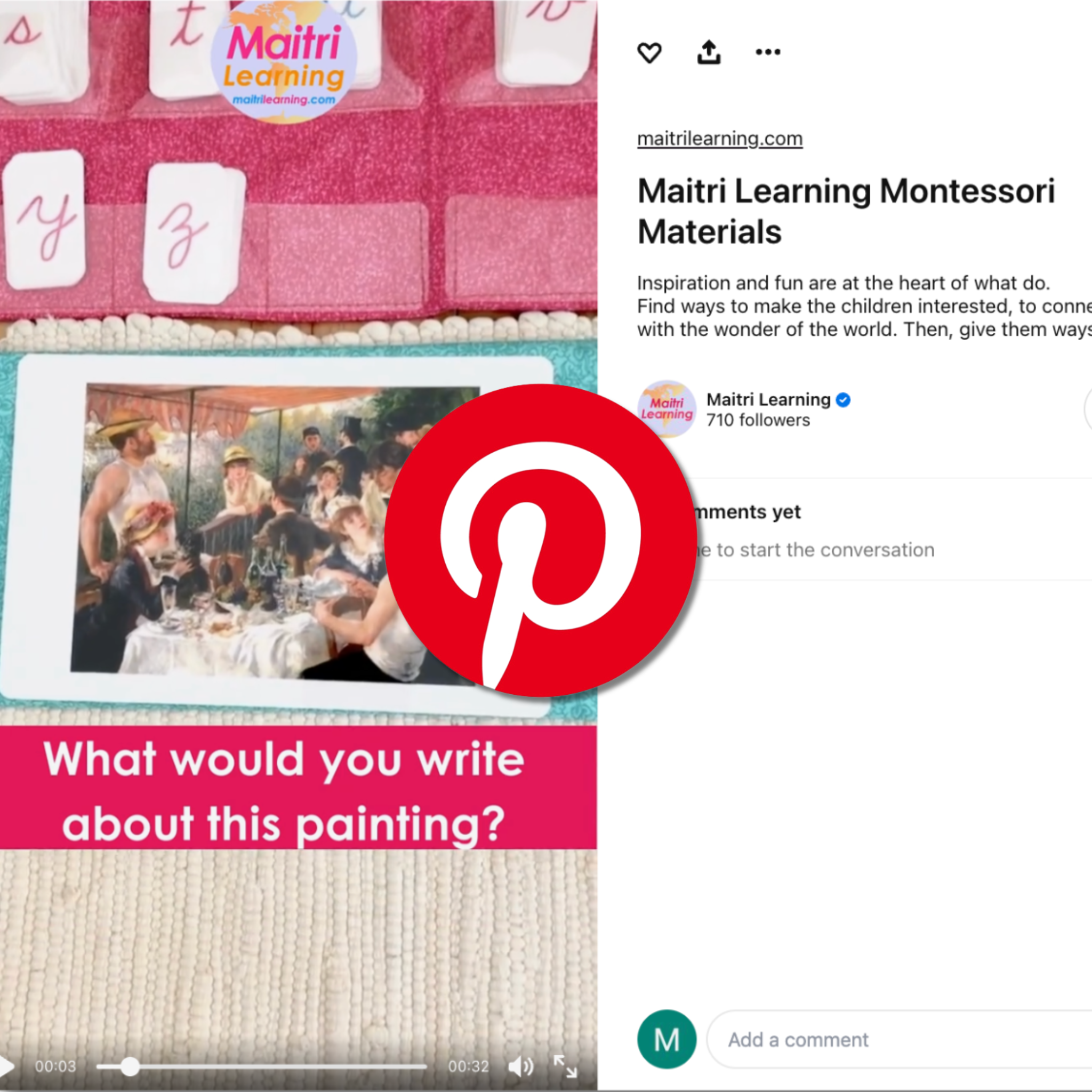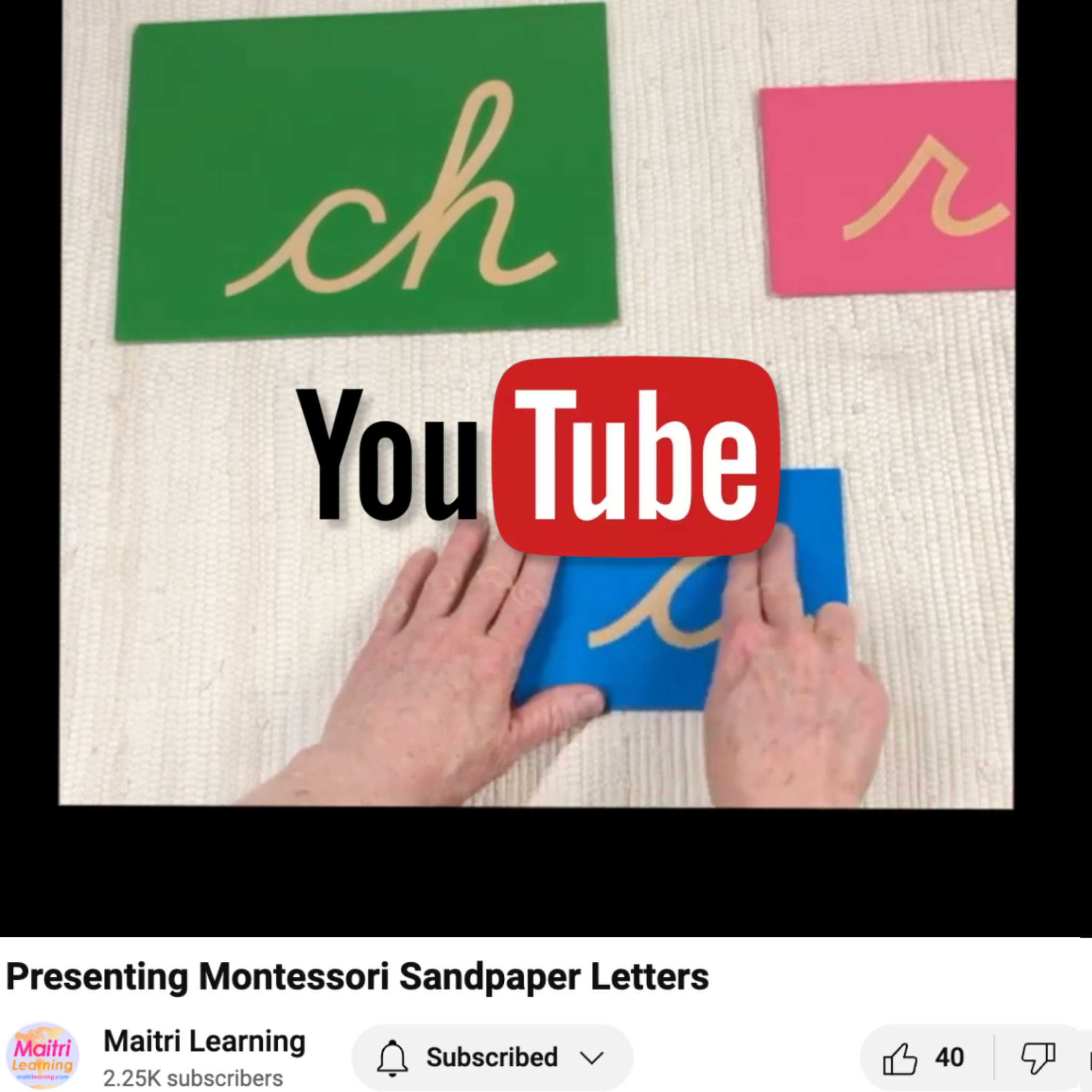Action Research in Your Classroom
 The recent bloom of published research from Montessori environments has been inspiring. Following the groundbreaking work of Angeline Lillard, we have the launch of the Journal of Montessori Research. On top of this, there are a growing number of graduate students undertaking Montessori-related research projects for their theses and dissertations. This is all most excellent news for the Montessori movement!
The recent bloom of published research from Montessori environments has been inspiring. Following the groundbreaking work of Angeline Lillard, we have the launch of the Journal of Montessori Research. On top of this, there are a growing number of graduate students undertaking Montessori-related research projects for their theses and dissertations. This is all most excellent news for the Montessori movement!
If you’d like to take a peek at what is already out there, go to scholar.google.org and search for Montessori. If you exclude patents and citations, you’ll get over 150,000 results! If you further refine your search to just what’s published in the past 4 years, you’ll still get nearly 17,000 results! Get a nice cup of tea and browse through the titles you see to get a sense of what is happening. Click through and read some abstracts. Then, start to think about what you might study in your own environment.
Here are the big picture steps involved in conducting your own action research:
- Identify your focus/interest
- “Muck about” to see what’s already known
- Define your research question
- Get Approval/Support
- Design your study/data collection/assessment tools
- Conduct the study/collect data
- Organize your results
- Analyze your findings
- Adjust and start again or share/repeat
I’ve created a My Research Project form that might help you get started. Try to fill it out as you read through the suggestions below.
If you want to go deeper, there are many wonderful resources available to guide you. Two books we used in my graduate research methods course at Harvard were (1) Research Essentials: An Introduction to Designs and Practices by Lapan and Quartaroli and (2) the American Psychological Association’s (APA) Publication Manual. If you want to dip your toes in for free, start with an oldie but goodie: Huck, Cormier, and Bounds’ Reading Statistics and Research from 1974. This gives some nice big picture information on educational research along with specifics on bread-and-butter statistical analyses.
-
Identify your focus/interest
What it is that you want to research? Is there a child in your class that is puzzling you? Is there a standard practice you follow that you want to prove works? Are you going nuts because the parent who volunteers in your class constantly interrupts the children and you want to train her how to stop? Whatever your interest, try to think about it deeply and entirely. See if you can determine the root of your motivation and specifically what change/outcome you are hoping for (if any). It’s particularly important for researchers to identify possible sources of bias in their work. Even the best of us can accidentally/unconsciously skew our findings. So really put some time into think about your motivation; what do you hope to get out of the study?
Once you have a clear topic, check for low hanging fruit before you get in too deep. Sometimes the thing that is puzzling us is not something that an intervention can change. For example, if a child’s behavior is resulting from chronic sleep deprivation, no matter what we do in the classroom (aside from letting the child nap), we won’t really help the core issue. Likewise, if your co-teacher is dropping the ball because her spouse was just diagnosed with cancer, patience and compassion may be your best option in the short-term.
-
“Muck about” to see what’s already known
Now that you know what you want to study, you need to see what we already know about this topic. So, start talking about it! Ask your colleagues, ask presenters at conferences, email professors/mentors, etc. Find out what people you respect think about this topic.
You also want to ground yourself in the published research and in how classroom research is generally conducted/written up. The American Montessori Society (AMS) has many resources for Montessori research on its website, including this Action Research handout. Pepperdine University also has a Center for Collaborative Action Research that has lots of great information. But my favorite for any scholarly research is Google Scholar.
Rather than just googling your research question, go to scholar.google.com and search from there. Browse through what you find and skim a few related papers. As you do, make special note of the keywords they list at the top of the paper. Try using these in your Google Scholar search to better find what’s published on your topic.
The good old US government also has a great site to search: ERIC. ERIC stands for Education Resources Information Center. It’s definitely worth a little time to conduct your keyword searches here too.
-
Define your research question
Once you have some knowledge about what is already known about your question, it’s time to get very specific on what you want to know. A research question is essential in driving your entire project. When you get it right, your research question will be in the format of: How does X influence/change/impact/improve Y?
For example, one question I had in my graduate research was: Does the young child’s ability to create words with the movable alphabet (X) differ from their ability to write those same words with a pencil (Y)? Now, as Montessorians, you and I already probably KNOW the answer to this question (like, of course they can use the movable alphabet before they can write words with a pencil). But, before my study, no one had published any formal research trying to answer it! So, this was an important question to formally study. It also meant there was a very good chance I would find some results worth publishing!
-
Get Approval/Support
When you go to graduate school, you learn specific procedures for conducting scholarly research. By following this guidance and with the support/approval of an Institutional Review Board (IRB), you can conduct a bona fide research study. Most classroom teachers do not have free, university-based access to an IRB. If this describes you, don’t be discouraged. There are options available to make sure you get the support you need to conduct an ethical study.
First, if the research you are conducting is simply qualifying or quantifying your standard classroom practices, your study may well be exempt from needing IRB approval. You can go to the Dept of Health and Human Services (HHS) website to look at their IRB exemption decision charts.
But, even if you are positive that your research is exempt, the researcher is not supposed to make the decision about whether or not IRB approval is needed. Instead. you need the support of a mentor. If you are already connected with someone at a University that has an IRB for educational research, reach out to them. If not, the American Montessori Society’s Research Committee can help you find a mentor. Just email Gay Ward (gay.ward at uwrf.edu) from AMS and she will put you in touch with someone. But, before emailing her, make sure you have completed all necessary preparatory work described above.
My friend and education guru Tracey Tokuhama-Espinosa suggested joining UNIFIED, an organization that matches teachers with researchers. According to their website, "UNIFIED seeks to bring teachers, with or without research experience together with trained researchers. This is a great opportunity to develop research projects together and to learn along the way."
Also, if you don’t plan on publishing your research, IRB approval (while always preferred) is not absolutely required. The AMS website has a place for this type of “Plan B” research on its action research website. Again, get in touch with a mentor before plowing ahead.
-
Design your study/data collection/assessment tools
Reliability & Validity: You want your data to be:
- Reliable: the results are accurate (e.g., the same results would be found even if several different people collected the data)
- Valid: the data you collect actually represents what you think it represents (e.g., you tally the number of times a child pushes another child, not how many times he ’looks’ upset)
So, think about how you will achieve these two goals! Talk to your colleagues/friends and see if they think the way you are thinking of collecting data will actually reliably and validly answer the question you think it will answer.
For example, in my research on handwriting vs. the movable alphabet, I had my husband use the spelling rubric to grade all of the children’s handwritten spelling responses. I did not tell him what grades I gave the children. I did not hover over him while he graded them (although I was tempted). But, when he was done, I collected all of his results and compared them to my results. Our scoring was almost the same (a very strong correlation of r = 0.914; that’s statistically significant at the p < 0.001 level). By having another rater score the spellings, I significantly increased the reliability of my results.
Subjects: Identify exactly who will be studied, how many people, and their demographics (e.g., 24 students aged 3 to 6 in my classroom; 12 students receive free or reduced-price lunch).
Time period: The study needs a beginning date, active period, and completion date. This is more important than you might think. It helps situate the research in our historical experience. For example, if you conducted your study starting a few days before and continuing for a few weeks after September 11, 2001, you might have unusual findings because of the unique events of that time period. You also want to run your study in one time period for this same reason. If you collect your archival data from 2000, 2001, and 2002, you may have quite different results in 2001 because of September 11.
Materials/Data collection tools: What tools will you use to collect your data? Do you need to create something or is there something validated that already exists? You may wish to gather your data from existing sources like progress reports, standardized assessments, student work (portfolios or samples), or other archival evidence. Or, you may want to capture what is happening in the midst of your study by creating tally sheets, recording dates of student milestones, interviewing students/staff/parents, keeping specific observation notes/logs, taking videos/photos, using validated assessment tools (e.g., PALS PreK), and/or completing behavioral checklists.
When you’re working with young children and asking them to complete a specific task, it is helpful to have a quick behavioral checklist available that you can fill out immediately after the assessment. You’ll want to know if it is or is not the behavior that is influencing assessment results. I created and tested a tool for this purpose called the Preschool Behavioral Assessment Rubric (PBAR) (citation: Volkman, J. (2018). Scaffolds and Spelling in Preschool: Using a Movable Alphabet to Measure Early Literacy (Master’s Thesis, Harvard University). https://dash.harvard.edu/handle/1/37736756). Feel free to use it and let me know if it helps!
Whatever tools you decide to use, consider whether they are going to give you the answers that you seek. Be specific in determining which part of your research question will be answered by the data from which tool.
Methods/Procedures: Describe PRECISELY every single step involved in the study: what does the researcher(s) do, where, when, how, and with what tools? The point of formalizing your research is to make it replicable. If someone else read your report, could they duplicate what you did? That’s the level of detail you want to put on paper.
Analysis Plan: What will you do with your data? How will you analyze it? You want to know precisely what you will do with your data once you have it. Get a sample of your measurement tool(s), create a mock-up of the data, and try to analyze your results. I can’t say enough how important this step is! You don’t want to spend months working on something only to find out you had the wrong measure and have to start over again.
-
Conduct the study/collect data
Once your plan is formalized and approved, it’s time to get started! Now you have to do exactly what you said you would do. Follow all of your procedures precisely. If any differences occur (e.g., one student is gone for two weeks on a family vacation), make note of it; these changes can influence your findings.
As you collect your data, remember that confidentiality is not only respectful, it is required. Figure out a system so that your data collection sheets are all de-identified; that means they do not contain any information that someone could use to identify the subject. So, no student initials or names. You’ll need some kind of a code that only the researcher(s) know. Use that code to keep your data labelled but de-identified at the same time.
-
Organize your results
Depending on your measurements, you may find yourself with data that is quantitative (can be counted, a quantity) or qualitative (gives information on a quality like an emotion). You can spend a lot of time learning theories on how to best present qualitative and quantitative data. I encourage you to research this further to see what approaches make most sense for your data and your situation. Then, organize your data accordingly. Tables and graphs are time-tested and effective methods of presenting your findings. If you can do statistics, go for it! Again, reach out to your mentor or others for help.
-
Analyze your findings
Once you’ve got everything organized and your results presented in a way that makes sense, look to see if you found anything significant. In research, significance is a technical term that relates to a statistic. There’s a lot of leeway when we look at numbers. We want to know if what happened is just chance or likely caused by a specific event/intervention. Statistics can help us figure this out.
The bottom line is, did you find anything worth talking about? Do your results paint a picture that answers your research question in a compelling way? Is the answer what you expected? This is the really juicy part of research and when you often find rather unexpected things.
Remember, even if you found nothing, you found something. If your hypothesis does not prove to be true (e.g., results are same in your intervention group and your control group), then you have learned that that intervention doesn’t work. That is good to know.
-
Adjust and start again or share/repeat
Depending on what you find, decide what the best next steps are. Do you need to refine a procedure/material/data collection tool and try it again? Are you results convincing enough to share with a larger group? In your original work with your mentor, you may have decided that you were going to share all results with staff or parents or students. Now is the time to follow-up and do what you said you would do. But it’s also the time to sit back and enjoy what you’ve accomplished! Research is quite rewarding, even if you don’t find anything earth shattering. The process of validating your theories is, well, validating.
Please let us know if you have anything to add or if you have questions. I want to encourage you to try some formal research in your environment. The world will benefit greatly by having more clinical data to support the amazing benefits we all know about Montessori education. Good luck!









Leave a comment
This site is protected by reCAPTCHA and the Google Privacy Policy and Terms of Service apply.